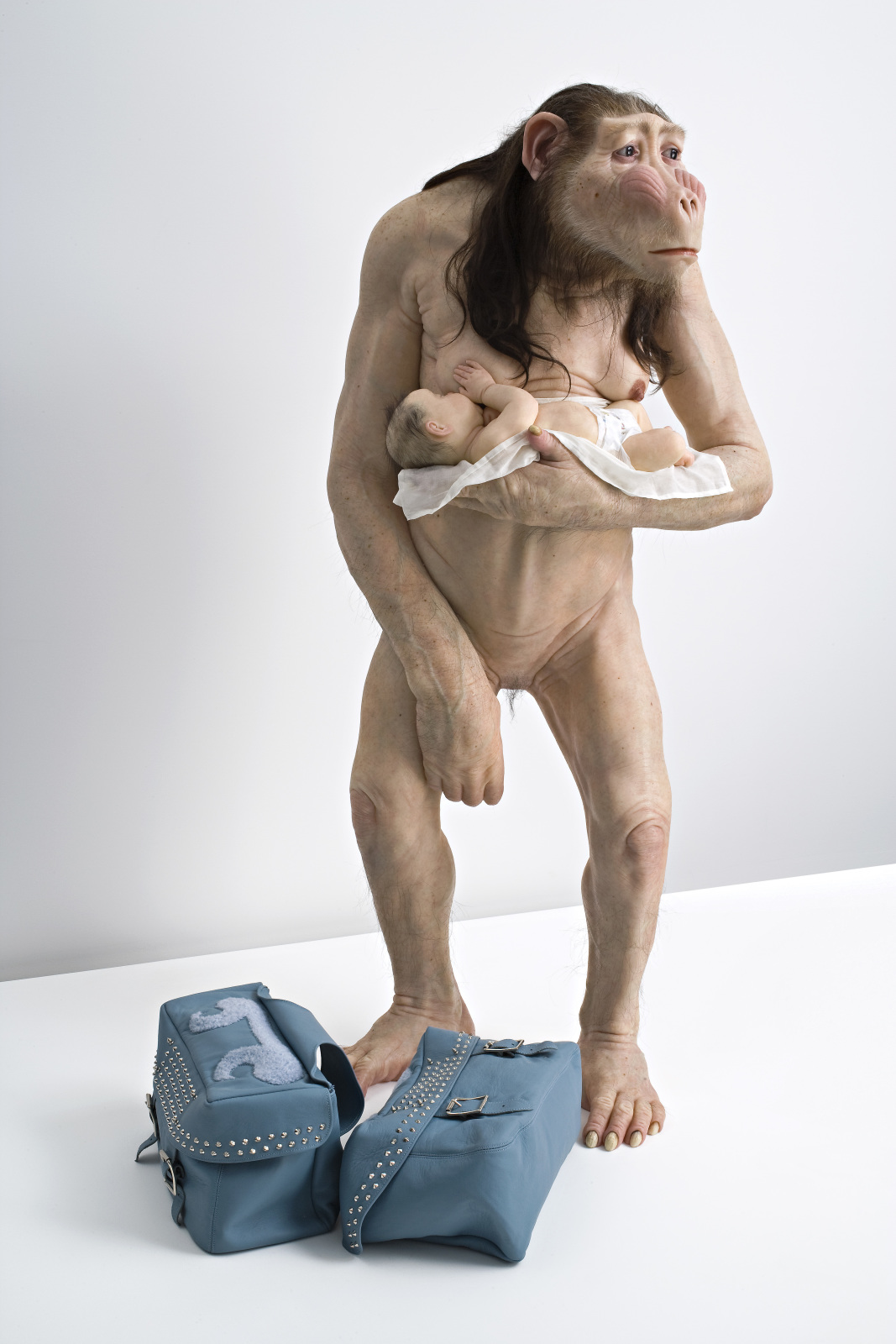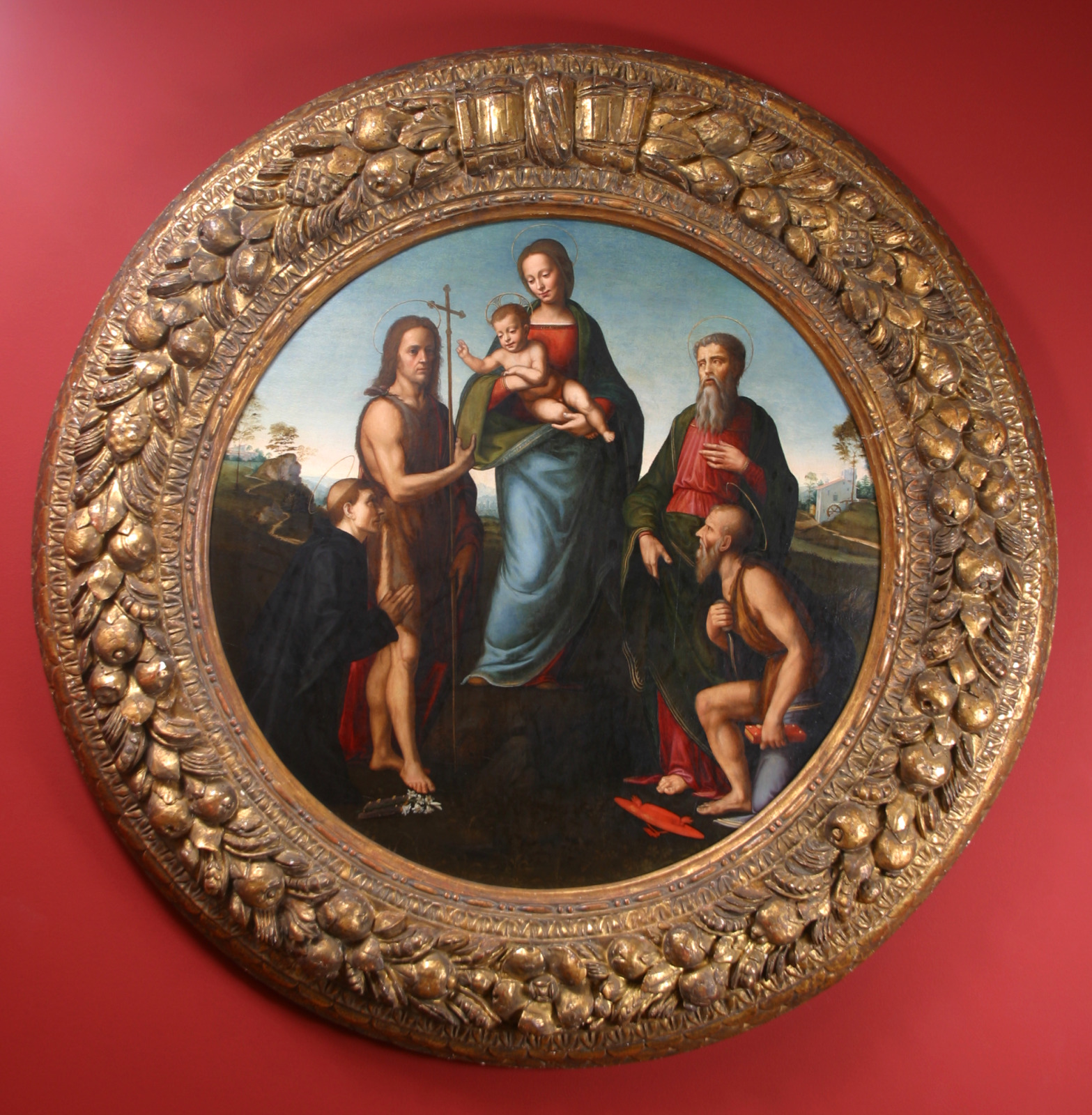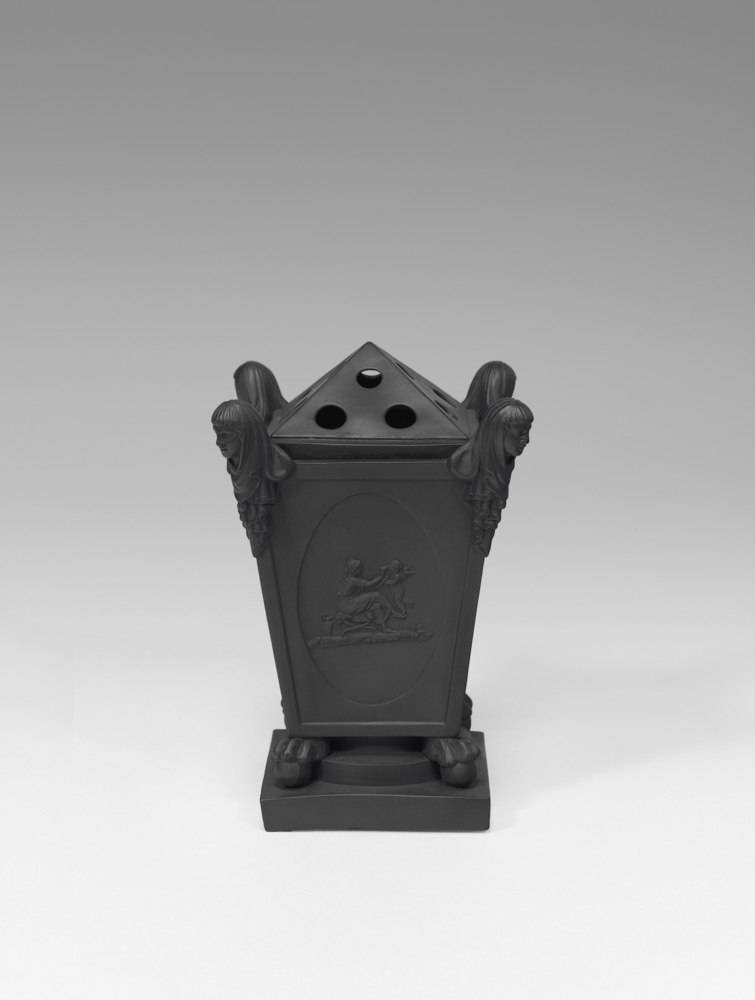
Paul Bartlett (American, 1881–1965). Ogunquit Morning (Morning Conclave), 1925, oil on canvas. The Harry and Mary Dalton Collection. 1990.72.1
6 works of art that celebrate motherhood
Motherhood has inspired art and artists throughout the ages with themes of guidance, love and protection. On the cusp of Mother’s Day, Mint curators Jen Sudul Edwards, PhD, Jonathan Stuhlman, PhD and Brian Gallagher spotlight pieces in the Mint’s collection that give a nod to the beauty of motherhood.

Patricia Piccinini (Australian, 1965- ). Big Mother, 2005, silicone, fiberglass, leather, and human hair. Gift of the Tony Podesta Collection. 2014.75.18. © Patricia Piccinini, 2005
Big Mother
Australian artist Patricia Piccinini was inspired to create Big Mother after watching a documentary on baboons that included the passionate intensity with which a mother would grieve the loss of a child. The parallels between species instantly became evident to her and as with all of her work, she sought to unite the gap between living forms with a bridge of compassion, recognizing that new scientific innovations are breaking down those barriers, as well.
Piccinini has described Big Mother in this way: “She encapsulates what it means to be human today, how we define our humanness, and the ethics and the advocation of new medical technologies like genetic engineering. She also embodies that amazing push-pull of difference. We can recognize her, but she is something else, which is strange for us. … In the end, what the work is really about, is how important it is to maintain the distinction between animals and ourselves and how fragile that distinction really is.” —Jen Sudul Edwards, PhD, Chief Curator and Curator of Contemporary Art
[cs_divider]

Ridolfi Ghirlandaio (Italian, 1483-1561) Madonna and Child with Four Saints, circa 1515, oil on canvas. Gift of Mr. Samuel H. Kress. 1943.2
Madonna and Child with Four Saints
Every culture has images celebrating the unique bond between mother and child and such images became a staple of Christian iconography, as well. Medieval and early Renaissance representations tended toward a formal Mary who served as a support for a wise Christ, small in size, but mature in face. In the High Renaissance when Ridolfi Ghirlandaio painted, the Catholic church sought to portray a more empathetic, relatable Holy Family. Images of Mary and Christ softened, moving from ornate thrones to verdant fields and from stiff poses to loving embraces. The four apostles make the religious connotations immediately clear, but if they were removed, the mother and child could be a maternal image from any time, any place: a mother adjusting her weight to accommodate a squirming infant who reaches inquisitively for an object nearby, watching his movements with a gentle love. —Jen Sudul Edwards, PhD, Chief Curator and Curator of Contemporary Art
[cs_divider]

George W. Bellows (American, 1882–1925). Mother and Children, 1916, Japan paper. Gift of the Friends of the Mint on the Occasion of its 20th Anniversary (1965-1985). 1985.48.1
Mother and Children
Although George Bellows made a name for himself with paintings and drawings that showed the grittiness of urban life, he also produced more tender images, like this one. Mother and Children depicts the artist’s wife Emma and their children, Anne and Jean, relaxing outside under a striped awning. —Jonathan Stuhlman, PhD, Senior Curator of American Art
[cs_divider]

Paul Bartlett (American, 1881–1965). Ogunquit Morning (Morning Conclave), 1925, oil on canvas. The Harry and Mary Dalton Collection. 1990.72.1
Ogunquit Morning
This sun-filled scene, created at an artist’s colony in Ogunquit, Maine, nearly a century ago, features three women and three young children enjoying a sun-drenched morning by the sea. —Jonathan Stuhlman, PhD, Senior Curator of American Art
[cs_divider]

Wedgwood. Staffordshire, England, 1759–present; Teapot, circa 1785–1790, stoneware (jasperware). Museum Purchase: Funds provided by the Wedgwood Society of Washington DC. 2018.5.1a-b
Wedgwood Teapot
The figures in relief on this jasperware teapot include a mother and her children as they approach a tripod table supporting a basket filled with fruit. The scene was designed by Elizabeth Upton, Lady Templetown (1747–1823), as part of her Domestic Employment series, and it was modeled in three-dimensional form by William Hackwood, a talented sculptor at the Wedgwood factory. —Brian Gallagher, Curator of Decorative Arts
[cs_divider]

Turner. Staffordshire, England, circa 1760–1829; Bough Pot, circa 1800, stoneware (black basalt). Collection of Lucie and Bob Reichner
Bough Pot
The relief decoration on one side of this bough pot—on view in the Classic Black: Basalt Sculptures of Josiah Wedgwood and His Contemporaries exhibition—features the Roman goddess Venus balancing her son Cupid on her right foot. Known as Sportive Love, the relief was designed by Elizabeth Upton, Lady Templetown (1747–1823), a talented, amateur artist who sold her designs to various Staffordshire potteries. —Brian Gallagher, Curator of Decorative Arts